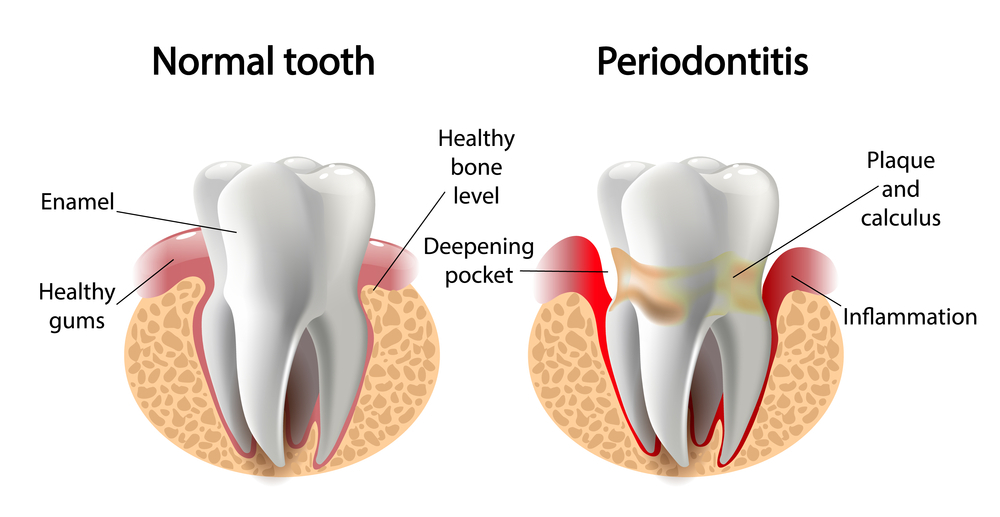Dental implants have revolutionised dentistry, offering a permanent solution for tooth loss that looks, feels, and functions like natural teeth. But behind the seamless smile lies a meticulous process that involves not just the placement of implants but also the artistry of gum treatment. If you are looking to get dental implants in Wollongong, Gum and Dental Implant Centre is your solution. In this blog, we’ll explore the intricacies of dental implants and how gum treatment plays a crucial role in their success.
Table of Contents
ToggleThe Foundation: Understanding Gum Health
Understanding the significance of gum health is important for predicting the success of dental implants. They are the foundation for securely anchoring dental implants, providing stability and support for long-term functionality. Hence, the maintenance of gum health is crucial for implant success, as it directly influences the outcome of implant procedures. Here’s an overview of common gum issues and their impact on implant candidacy:
1. Gum Disease (Periodontitis):
Periodontitis, a severe gum infection, can lead to inflammation, gum recession, and bone loss. Individuals with untreated gum disease may lack the necessary gum tissue and bone support for successful implant placement. Addressing and managing gum disease through professional treatment is imperative to improve implant candidacy and ensure favourable outcomes.
2. Gum Recession:
Gum recession occurs when the gum tissue pulls away from the teeth, exposing the tooth roots. Severe gum recession can compromise the stability and aesthetics of dental implants, as there may be insufficient healthy gum tissue to support the implant. Treatments like gum grafting procedures may be necessary to restore gum tissue volume and enhance implant candidacy.
3. Gum Inflammation and Infection:
Chronic gum inflammation, or gingivitis, can progress to periodontitis if left untreated. Inflamed or infected gums can impede the healing process after implant placement and heighten the risk of implant failure. Maintaining proper oral hygiene practices and undergoing regular professional cleanings from a periodontist is vital for preserving gum health and optimising implant success rates.
Artistry in Dental Implants
Dental implants are not just about functionality; they’re also a form of artistry. Crafting and placing dental implants involves a meticulous approach and a keen eye for detail to achieve natural-looking results that seamlessly blend with the patient’s smile.
The Intricate Dental Implants Process:
Crafting and placing dental implants is a multi-step process that requires precision and expertise.
Step-1: Evaluation of the patient’s oral health and jaw structure using advanced imaging technology and create a detailed 3D image of the patient’s mouth, allowing for precise implant placement planning.
Step-2: The dental implants are meticulously crafted to match the patient’s natural teeth’ size, shape, and colour. This may involve customising the implants to ensure a perfect fit.
Step-3: To carefully position the implants into the jawbone with utmost precision during the surgical placement phase. This requires skilful technique and attention to detail to ensure proper alignment and stability.
Step-4: The final step involves the placement of dental restorations, such as crowns or bridges, onto the implants. These restorations are custom-designed to mimic the appearance of natural teeth, resulting in a seamless and lifelike smile.
By combining precision techniques with accurate expertise, periodontists can transform smiles with dental implants, restoring not only form and function but also aesthetics. Each implant procedure showcases the ability of periodontal professionals to create beautiful smiles that look and feel natural.
The Journey: Step-by-Step Gum Implants Guide
Beginning your dental implant process can seem daunting, but understanding what is included in the procedure from beginning to end can help you with your concerns and provide clarity. From the initial consultation to the final restoration, each stage of the dental implant process is carefully orchestrated to ensure a successful outcome and a restored smile.
Detailing the Stages:
Consultation
The journey begins with an initial consultation with a dental implant specialist. During this visit, the dentist evaluates the patient’s oral health, discusses treatment goals, and addresses any questions or concerns.
Treatment Planning
A personalised treatment plan is developed after the consultation based on the patient’s unique needs and preferences. Advanced imaging techniques may be used to assess bone density and aid in precise implant placement.
Implant Placement
The next stage involves the surgical placement of dental implants into the jawbone. This procedure is performed under sedation to ensure patient comfort. The implants are artificial tooth roots and provide a stable foundation for dental restorations.
Healing Period
After implant placement, a healing period is necessary to allow the implants to integrate with the surrounding bone. This process, known as osseointegration, usually takes several months.
Final Restoration
After the implants have fully integrated, the restoration phase begins. Customised dental crowns, bridges, or dentures are attached to the implants, restoring function, aesthetics, and confidence in the patient’s smile.
Addressing Common Concerns:
Throughout the journey, patients may have concerns about pain, recovery, or the longevity of dental implants. Dentists provide thorough education, support, and reassurance to address these concerns and guide patients through each stage of the process with confidence and peace of mind. With proper care and maintenance, dental implants can provide a durable and natural-looking solution for missing teeth, enhancing oral health and quality of life.
The Importance of Gum Treatment in Implant Success
Gum health is a critical factor in ensuring the long-term success of dental implants. By exploring the relationship between gum health and implant outcomes and discussing the significance of pre-implant gum treatments, we can better understand how to create an optimal environment for successful implant placement.
Contribution of Gum Health for Implant Success:
Healthy gums provide a stable foundation for dental implants by supporting the surrounding bone and soft tissue. Gum diseases, such as gingivitis and periodontitis, can compromise the integrity of the gums and underlying bone, leading to implant failure. Poor gum health increases the risk of complications during and after implant placement, including infection, inflammation, and bone loss.
Discussing Pre-Implant Gum Treatments:
1. Scaling and Root Planing:
- Removes plaque and tartar buildup from the gumline and tooth roots.
- Prepares the gums for implant placement by creating a clean, healthy environment.
2. Periodontal Therapy:
- Targets inflammation and infection in the gums.
- Promotes gum healing and reduces the risk of complications post-implant placement.
By addressing gum issues through these treatments before implant placement, we ensure a favourable environment for the successful integration and long-term stability of dental implants.
Artistry Beyond Aesthetics: Functional Benefits of Dental Implants
Dental implants offer more than just aesthetic enhancements—they provide significant functional advantages for oral well-being. By highlighting these benefits, we can better understand the importance of well-designed implants in improving chewing and speech function and enhancing overall oral health.
A. Functional Advantages of Dental Implants:
1. Improved Chewing Ability:
- Dental implants function like natural teeth, providing a stable foundation for chewing.
- Unlike traditional dentures, implants are securely anchored in the jawbone, allowing for more efficient chewing of food without slippage or discomfort.
2. Enhanced Speech Clarity:
- Missing teeth or ill-fitting dentures can affect speech clarity and pronunciation.
- Dental implants restore proper tooth alignment and support facial muscles, producing clearer speech and improved articulation.
3. Stability and Durability:
- Implants are designed to withstand the forces of biting and chewing, offering superior stability and durability compared to other tooth replacement options.
- With proper care and maintenance, implants can last a lifetime, providing long-term functional benefits.
B. Showcasing Well-Designed Implants:
1. Natural-Looking Appearance:
- Well-designed implants closely mimic the appearance of natural teeth, blending seamlessly with the surroundings.
- Their lifelike appearance enhances confidence and self-esteem, contributing to overall oral well-being.
2. Preservation of Bone Health:
- Implants stimulate the jawbone. They prevent bone loss and preserve facial structure.
- This helps maintain optimal oral health and prevents surrounding teeth and tissue deterioration.
By emphasising the functional benefits of dental implants and showcasing their well-designed nature, we can appreciate their significant role in enhancing chewing and speech function and promoting overall oral well-being. With dental implants, patients can enjoy restored confidence, comfort, and functionality in their daily lives.
Conclusion:
Dental implants offer a life-changing solution for tooth loss, restoring the functionality and aesthetics of your smile. However, the success of implant treatment hinges on more than just implant placement – it requires meticulous attention to gum health and proper gum treatment. At Gum and Dental Implant Centre, our skilled professionals are dedicated to ensuring that your gums are in optimal condition before, during, and after implant surgery. Whether you require treatment for gum disease, gum recession, or gum grafting, we have the expertise and resources to address your unique needs. Trust the Gum and Dental Implant Centre to provide you with the care and expertise you deserve. Schedule a session with us today!
FAQs
Dental implants can be placed in individuals with receding gums, but it’s essential to address gum recession before implant surgery. Gum grafting procedures may be recommended to restore gum tissue volume and create a stable foundation for implant placement.
While dental implants themselves do not prevent gum disease, maintaining good oral hygiene habits is crucial for preventing implant-related complications. Regular brushing, flossing, and dental check-ups help prevent gum disease and ensure the long-term success of dental implants.
The healing process after dental implant surgery varies from person to person but typically takes several months. During this time, the gums gradually heal, and the implants integrate with the jawbone through osseointegration. Patients may experience some discomfort and swelling immediately after surgery, but these symptoms usually subside within a few days to weeks.
One of the newest technologies in dental implants is computer-guided implant surgery. This advanced technique uses 3D imaging and computer-assisted planning software to precisely plan implant placement before surgery. Computer-guided implant surgery improves accuracy, reduces surgical time, and enhances the predictability of implant outcomes, leading to better patient experiences and results.

Dr Leo Liu
Dr Leo Liu is a registered Periodontist in Australia and New Zealand, specialising in periodontology and dental implant surgeries. Dr Liu holds a Master of Dental Surgery in Periodontology from the University of Hong Kong, as well as Speciality Memberships in Periodontics from the Royal College of Dental Surgeons of Edinburgh and the Royal College of Physicians and Surgeons of Glasgow. With extensive experience as a private practitioner and honorary clinical assistant professor, Dr Liu excels in evidence-based periodontal tissue regeneration, complex bone augmentation and dental implants. He actively engages with international organisations and is fluent in Cantonese and Mandarin. Dr Liu practices at the Gum & Dental Implant Centre, serving the Illawarra community.

